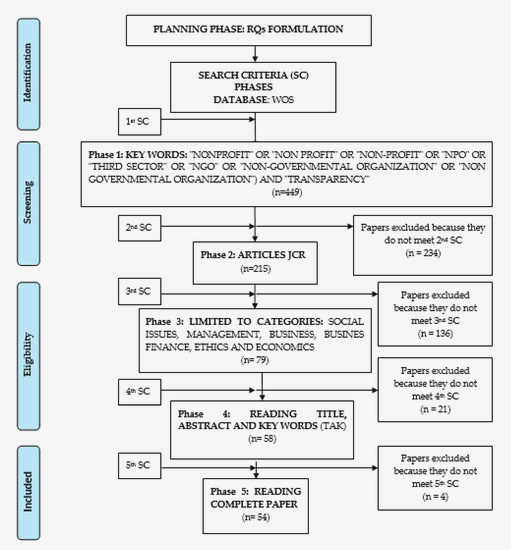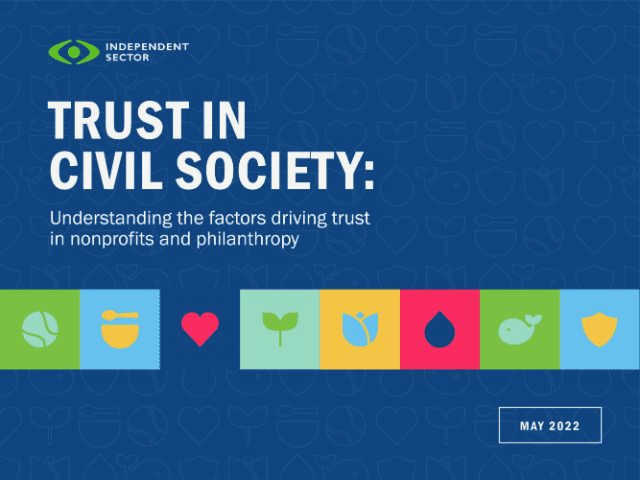Trust and transparency are crucial elements for the success of nonprofit organizations in civil society. In order to effectively fulfill their mission and attract support from donors and the public, nonprofit organizations must establish trust and maintain transparency in their operations.
Trust is the foundation on which nonprofit organizations build relationships with their stakeholders. Whether it’s donors, volunteers, or beneficiaries, trust is essential for a nonprofit to secure the support and engagement of these key parties. When stakeholders trust a nonprofit, they are more likely to donate their time, money, or resources, knowing that their contributions will be used for their intended purpose.
Transparency, on the other hand, is the means by which nonprofit organizations demonstrate their trustworthiness. By being open and honest about their financials, governance, and impact, nonprofits can show stakeholders that they have nothing to hide. Transparency helps build credibility and assures stakeholders that their contributions will be used responsibly and effectively.
Building trust and transparency requires a commitment from nonprofit organizations to operate with integrity and accountability. This involves adopting best practices in governance, financial management, and program evaluation. Nonprofits should have strong internal controls and mechanisms in place to prevent fraud and misconduct. Regular and clear reporting on activities, outcomes, and finances is also essential to maintaining transparency.
In conclusion, trust and transparency are fundamental for the effectiveness and sustainability of nonprofit organizations in civil society. By prioritizing these principles, nonprofits can foster meaningful relationships with their stakeholders, attract support, and make a positive impact in the communities they serve.
Establishing Credibility through Transparency
One of the most important factors in building trust and credibility as a nonprofit organization in civil society is transparency. By providing clear and open information to stakeholders, nonprofits can establish themselves as trustworthy and reliable entities.
Transparency starts with being honest and open about an organization’s finances. Nonprofits should regularly publish their financial statements, detailing how funds are allocated and spent. This information should be easily accessible to the public, either through the organization’s website or annual reports. By doing so, nonprofits demonstrate their commitment to accountability and sound financial management.
In addition to financial transparency, it is crucial for nonprofit organizations to be transparent about their operations and decision-making processes. This includes sharing information about the organization’s mission, goals, and strategies. Nonprofits should also communicate the impact of their programs and initiatives, providing evidence of their effectiveness and success.
Furthermore, transparency extends to the relationships and partnerships that nonprofit organizations establish. Nonprofits should disclose any conflicts of interest between board members, staff, and major donors, as well as the measures taken to address and manage these conflicts. By being transparent about these relationships, nonprofits can maintain the trust of their stakeholders and ensure ethical conduct.
Transparency can also be fostered through open and effective communication channels. Nonprofits should actively engage with their stakeholders, including donors, volunteers, and beneficiaries, by providing regular updates on the organization’s activities and progress. This can be done through newsletters, social media platforms, and public meetings. By keeping stakeholders informed, nonprofits can demonstrate their commitment to transparency and build strong relationships.
In summary, establishing credibility through transparency is essential for nonprofit organizations in civil society. By being open and honest about their finances, operations, relationships, and communication, nonprofits can build trust and strengthen their reputation as accountable and trustworthy entities.
Fostering Open Communication and Accountability
Promoting Transparent Communication Channels
One of the key aspects of fostering open communication is promoting transparent communication channels within the organization. This can be achieved by establishing clear lines of communication and ensuring that information flows freely among staff, volunteers, and other stakeholders. Transparency in communication helps to build trust among individuals and promotes a sense of accountability.
Encouraging Feedback and Participation
In order to foster open communication, it is important to encourage feedback and participation from all levels of the organization. This can be done through regular meetings, surveys, and open forums where everyone is encouraged to share their ideas, concerns, and suggestions. By creating a culture of open communication, nonprofits can ensure that everyone’s voice is heard and valued, and that decisions are made collectively.
Setting Clear Goals and Expectations
In addition to open communication, fostering accountability within the organization is crucial. This can be achieved by setting clear goals and expectations for everyone involved, including staff, volunteers, and board members. By clearly defining roles, responsibilities, and objectives, nonprofits can ensure that everyone understands what is expected of them and can be held accountable for their actions.
Monitoring and Evaluation
Regular monitoring and evaluation processes are essential for promoting accountability within nonprofit organizations. By regularly assessing the progress and impact of their work, organizations can identify areas for improvement and make necessary changes. This not only helps to ensure that resources are being used effectively, but also promotes transparency and accountability to donors, stakeholders, and the wider community.
Reporting and Transparency
Finally, nonprofits should prioritize reporting and transparency in order to build trust and accountability. This includes regularly reporting on financials, impact, and progress towards organizational goals. By being transparent about their operations, nonprofits can demonstrate their commitment to accountability and build trust with donors, supporters, and the public at large.
Ensuring Financial Integrity and Ethical Practices
Transparent Financial Reporting
Nonprofit organizations must prioritize financial integrity and ethical practices to build trust with their stakeholders. One of the key aspects of this is transparent financial reporting. By providing clear and detailed financial information, nonprofits can demonstrate their commitment to accountability and sound financial management. This includes regularly publishing audited financial statements, breaking down income and expenses, and ensuring that donors and other stakeholders have access to this information.
Ethical Fundraising Practices
Another important aspect of ensuring financial integrity is abiding by ethical fundraising practices. Nonprofits must adhere to regulations and guidelines governing fundraising activities, such as being transparent about how donations will be used and ensuring that donors’ intentions are respected. It is essential to avoid misleading or deceptive fundraising tactics and to provide accurate information about the organization’s mission, programs, and outcomes to donors.
Avoiding Conflicts of Interest
Nonprofit organizations must also be vigilant in avoiding conflicts of interest that could compromise their financial integrity. This includes implementing a clear policy on conflicts of interest and ensuring that board members, staff, and volunteers are aware of and adhere to this policy. By identifying and addressing potential conflicts of interest, nonprofits can maintain trust and demonstrate their commitment to ethical practices.
Compliance with Legal and Regulatory Requirements
To ensure financial integrity, nonprofits must also comply with legal and regulatory requirements related to financial management. This includes filing the necessary tax forms, obtaining any required licenses or permits, and following any specific regulations that apply to their sector. Nonprofits should also establish internal controls and accountability mechanisms to prevent fraud or mismanagement of funds.
Regular Audits and Reviews
Regular audits and reviews of financial records are essential to ensure financial integrity. Nonprofits should engage qualified external auditors or conduct internal audits to assess their financial practices and identify any areas of concern. These audits help to identify and address any discrepancies or inconsistencies and provide reassurance to stakeholders that the organization is committed to transparency and accountability.
In conclusion, ensuring financial integrity and ethical practices is crucial for nonprofit organizations to build trust and credibility in civil society. By prioritizing transparent financial reporting, ethical fundraising practices, avoiding conflicts of interest, complying with legal and regulatory requirements, and conducting regular audits, nonprofits can demonstrate their commitment to financial accountability and ethical behavior.
Building Trust through Consistency and Reliability
Consistency and reliability are essential qualities for nonprofit organizations seeking to build trust with their stakeholders. When an organization consistently delivers on its promises and demonstrates a reliable track record of performance, it instills confidence and fosters trust among donors, volunteers, and the community at large.
One way nonprofit organizations can demonstrate consistency is by maintaining clear and transparent communication with their stakeholders. This means regularly sharing updates, progress reports, and financial statements to keep stakeholders informed about the organization’s activities and outcomes. Consistent and reliable communication helps to build credibility and reassures stakeholders that the organization is operating in an ethical and accountable manner.
In addition to communication, consistency and reliability can also be demonstrated through the organization’s actions and operations. Nonprofits should strive to consistently meet their commitments, whether that involves delivering services to beneficiaries, honoring donor preferences, or complying with legal and regulatory requirements. By consistently fulfilling their obligations, nonprofits can build a reputation for reliability and earn the trust of their stakeholders.
Nonprofit organizations can also foster trust through their governance practices. This includes establishing robust systems and processes to ensure accountability and transparency in decision-making. For example, having a diverse and independent board of directors, implementing strong financial controls, and regularly evaluating and disclosing the organization’s impact and outcomes can all contribute to building trust.

Furthermore, nonprofit organizations can demonstrate their commitment to consistency and reliability by investing in ongoing professional development and capacity building. By staying up-to-date with best practices, research, and industry standards, nonprofits can continuously improve their performance and enhance their credibility. This commitment to learning and improvement reinforces the organization’s reliability and builds trust with stakeholders who rely on the nonprofit for its expertise and impact.
In conclusion, building trust through consistency and reliability is crucial for nonprofit organizations. By maintaining clear and transparent communication, fulfilling commitments, implementing strong governance practices, and investing in professional development, nonprofits can demonstrate their dedication to accountability and gain the trust of their stakeholders.

Engaging Stakeholders in Decision-Making
Engaging stakeholders in decision-making is an essential practice for nonprofit organizations to ensure transparency, accountability, and inclusiveness. By involving individuals and groups who are affected by the organization’s decisions, nonprofits can gain valuable insights, build trust, and foster a sense of ownership among stakeholders.
Identifying and prioritizing stakeholders: Nonprofit organizations should first identify their key stakeholders based on their relevance and level of influence. This can include beneficiaries, donors, volunteers, staff members, board members, government agencies, and the wider community. Once stakeholders are identified, it is important to prioritize their involvement based on the potential impact of the decision on their interests and the level of expertise they can bring to the table.
Creating meaningful engagement opportunities: Nonprofits should provide various channels and platforms for stakeholders to participate in decision-making processes. This can include town hall meetings, surveys, focus groups, advisory boards, and online forums. By offering different ways to engage, organizations can cater to the diverse needs and preferences of stakeholders, ensuring that voices are heard and opinions are taken into account.
Facilitating open and transparent communication: To build trust and transparency, nonprofits should provide clear and timely information about the decisions being made and the rationale behind them. This can be done through regular updates, newsletters, and reports. It is important to communicate not only the final decisions but also the factors considered, alternative options explored, and any trade-offs made during the decision-making process.
Building collaborative relationships: Engaging stakeholders in decision-making is not a one-time event but an ongoing process. Nonprofits should strive to establish long-term collaborative relationships with stakeholders, involving them not only in major decisions but also in the planning, implementation, and evaluation of programs and initiatives. By working together, nonprofits and stakeholders can achieve shared goals and create a more inclusive and effective civil society.
Demonstrating Impact and Outcomes
One of the key factors in building trust and transparency within nonprofit organizations is the ability to demonstrate the impact and outcomes of their work. Donors, stakeholders, and the general public want to know that their contributions and support are making a difference and creating positive change.

To effectively demonstrate impact and outcomes, nonprofit organizations must collect and analyze data that shows the progress and results of their programs and initiatives. This data can include quantitative information, such as the number of individuals served or the amount of funding raised, as well as qualitative data, such as success stories and testimonials from those who have benefitted from the organization’s work.
Nonprofit organizations can use various methods to communicate their impact and outcomes to their stakeholders. One approach is to create annual reports or impact reports that provide a comprehensive overview of the organization’s achievements and the difference it has made in the community. These reports can include statistics, case studies, and testimonials, providing a holistic picture of the organization’s impact.
Another effective way to demonstrate impact is through storytelling. By sharing individual stories of those who have been positively affected by the nonprofit’s work, organizations can create a powerful emotional connection and showcase the real-world impact of their efforts. This can be done through videos, blog posts, or social media campaigns.
In addition to storytelling, nonprofit organizations can also use visual representations, such as infographics or data visualizations, to make their impact and outcomes more tangible and understandable. By presenting information in a visually appealing and easy-to-digest format, organizations can effectively engage their audience and convey the depth and breadth of their impact.
Overall, demonstrating impact and outcomes is crucial for nonprofit organizations to build trust and transparency. By collecting and sharing data, telling compelling stories, and using visual representations, nonprofits can effectively showcase the difference they are making in their communities and ensure that donors and stakeholders have confidence in their work.
Promoting Volunteerism and Community Involvement
Engaging Volunteers in Meaningful Work
Volunteerism is a crucial aspect of building trust and transparency within nonprofit organizations. By offering opportunities for individuals to volunteer their time and skills, these organizations can actively involve community members in creating positive change. To promote volunteerism, nonprofits can create engaging projects that align with their mission and provide meaningful work for volunteers. By carefully matching volunteers with tasks that suit their abilities and interests, nonprofits can ensure a rewarding experience for both the volunteers and the organization.
Building Strong Relationships with Local Communities
Community involvement is essential for the success of nonprofit organizations. By actively engaging with the local community, nonprofits can gain a deeper understanding of its needs and concerns, and tailor their programs and services accordingly. This can be achieved through partnerships with local businesses and organizations, organizing community events and workshops, and conducting outreach programs to raise awareness about the organization’s mission and goals. By building strong relationships with the local community, nonprofits can foster trust and transparency, and ensure the long-term sustainability of their work.
Recognizing and Appreciating Volunteer Contributions
One key aspect of promoting volunteerism and community involvement is recognizing and appreciating the contributions of volunteers. Nonprofit organizations can express gratitude to their volunteers by publicly acknowledging their efforts and highlighting the impact they have made. This can be done through social media shout-outs, volunteer appreciation events, and personalized thank-you notes. By recognizing and appreciating the contributions of volunteers, nonprofits not only show their gratitude but also motivate others to get involved and make a difference.
Creating Opportunities for Skill Development and Growth
Volunteerism and community involvement can also serve as platforms for personal and professional growth. Nonprofit organizations can create opportunities for volunteers to develop and enhance their skills, such as through training programs or mentorship initiatives. By investing in the growth and development of their volunteers, nonprofits not only empower individuals but also strengthen their own capacity to achieve their mission and goals. This focus on skill development and growth can attract a diverse range of volunteers and promote a culture of learning within the organization.
Providing Flexibility and Support for Volunteers
To promote volunteerism and community involvement, nonprofits should provide flexibility and support for their volunteers. This includes offering flexible volunteering hours, providing clear guidelines and expectations, and offering ongoing support and mentorship. By creating a supportive and inclusive environment, nonprofits can ensure that volunteers feel valued and empowered in their contributions. This approach also allows volunteers to balance their volunteering commitments with their other responsibilities, making it more accessible for a wider range of individuals to participate.
Celebrating Success and Sharing Impact
Finally, promoting volunteerism and community involvement requires celebrating success and sharing the impact of the organization’s work. Nonprofits can do this by regularly communicating their achievements and the difference they have made in the community. This can be done through annual reports, success stories shared on social media, and impact assessments that demonstrate the tangible outcomes of the organization’s programs. By celebrating success and sharing impact, nonprofits can inspire more individuals to get involved, increasing volunteerism and community involvement.
Empowering and Training Nonprofit Leaders
Empowering and training nonprofit leaders is crucial for the success and sustainability of nonprofit organizations. Nonprofit leaders play a critical role in shaping the vision, mission, and strategy of an organization, as well as managing and mobilizing resources to achieve its goals.
Effective leadership is built on a foundation of knowledge, skills, and experiences. Nonprofit leaders need to have a deep understanding of the organization’s mission and values, as well as the ability to communicate and inspire others to support and contribute to its cause. They also need to possess strong managerial and strategic planning skills to ensure the efficient and effective use of resources.
Training programs can provide nonprofit leaders with the necessary tools and resources to succeed in their roles. These programs can cover a range of topics, including fundraising and resource mobilization, advocacy and public relations, financial management, and program evaluation. By equipping leaders with the knowledge and skills they need, training programs can help them navigate the complex challenges of the nonprofit sector and make informed decisions for the organization.
Empowerment is equally important in building strong nonprofit leaders. Providing leaders with the autonomy and authority to make decisions and take risks can foster a sense of ownership and commitment to the organization’s mission. It is essential to create a culture that encourages innovation, collaboration, and continuous learning, where leaders feel empowered to think creatively and develop new approaches to address social challenges.
In addition to training and empowerment, fostering mentorship and networking opportunities can also be beneficial for nonprofit leaders. Engaging in mentorship programs allows leaders to learn from experienced professionals who can share their knowledge, provide guidance, and offer support. Networking events and platforms provide opportunities for leaders to connect with their peers, exchange ideas, and build relationships that can lead to collaborations and partnerships.
In conclusion, empowering and training nonprofit leaders is crucial for the success and sustainability of nonprofit organizations. By equipping leaders with the necessary knowledge, skills, and experiences, as well as fostering a culture of empowerment, mentorship, and networking, organizations can enhance their leadership capacity and maximize their impact in the civil society.
Collaborating and Networking with Other Organizations
In order to thrive and bring about positive change in civil society, nonprofit organizations must recognize the importance of collaborating and networking with other organizations. By forming partnerships and alliances, nonprofits can leverage their resources and expertise to achieve common goals more effectively.
Benefits of Collaboration
Collaborating with other organizations can bring a range of benefits. For instance, it allows nonprofits to pool their knowledge, skills, and resources, leading to more innovative ideas and solutions. By working together, organizations can also share the workload and avoid duplication of efforts, maximizing their impact.
Collaboration can also enhance transparency and trust. When organizations come together to address common issues, they demonstrate their commitment to transparency, sharing information and resources openly. This builds trust among stakeholders and the wider community, increasing the credibility of the nonprofit sector as a whole.
Networking Opportunities
Networking with other organizations is an essential part of building trust and transparency. Nonprofits can attend conferences, workshops, and seminars to meet representatives from different organizations, share experiences, and learn from each other. These networking opportunities provide a platform for nonprofits to promote their work, explore potential partnerships, and stay updated on the latest trends and best practices in the sector.
Moreover, networking can lead to collaborations with organizations from other sectors, such as government agencies and businesses. Such partnerships can provide valuable resources, funding opportunities, and access to a wider audience, enabling nonprofits to expand their reach and achieve their mission more efficiently.
Building Sustainable Relationships
When collaborating and networking with other organizations, it is essential to focus on building sustainable relationships. This involves maintaining open lines of communication, being transparent about goals and expectations, and fostering a spirit of mutual trust and respect.
Regular communication and collaboration can help identify shared challenges and create opportunities for joint initiatives and projects. Additionally, by actively engaging in networking activities, nonprofits can establish themselves as trusted partners, paving the way for future collaborations and increased credibility within the sector and civil society as a whole.
In conclusion, collaborating and networking with other organizations is crucial for the success and effectiveness of nonprofit organizations in civil society. Through partnerships and alliances, nonprofits can harness their collective strength, enhance transparency, and build trust, ultimately driving positive change and making a lasting impact on the communities they serve.
Securing Public Support and Funding
Engaging with the Public
One of the key steps in securing public support and funding for nonprofit organizations is to actively engage with the public. This can be done through various channels such as social media, community events, and public forums. By listening to the concerns and needs of the community, nonprofits can better understand how to address those issues and demonstrate the impact they have on the community.
Building Trust and Transparency
Trust and transparency are crucial when it comes to securing public support and funding. Nonprofit organizations should be transparent about their mission, goals, and financial activities. This can be achieved by regularly publishing annual reports, financial statements, and other relevant information. By being transparent, nonprofits can build trust with the public and donors, which can ultimately lead to increased support and funding.
Cultivating Relationships with Donors
Building strong relationships with donors is essential for securing funding for nonprofit organizations. Nonprofits should establish clear communication channels with donors, providing them with regular updates on the organization’s activities and impact. Donors should feel valued and appreciated for their contributions, which can be done through personalized thank-you messages and recognition events. By cultivating relationships with donors, nonprofits can increase the likelihood of receiving ongoing financial support.
Demonstrating Impact
One of the most effective ways to secure public support and funding is to demonstrate the impact of the nonprofit organization’s work. This can be done by collecting and sharing data and success stories that highlight the positive outcomes achieved. Nonprofits should also be able to clearly articulate their goals and how they plan to achieve them. By showcasing their effectiveness, nonprofits can build credibility and inspire greater public support and funding.

Collaborating with Other Organizations
Collaborating with other organizations can also help secure public support and funding for nonprofit organizations. By partnering with like-minded organizations, nonprofits can leverage their combined resources and expertise to address community needs more effectively. Collaborative efforts can also attract the attention of potential funders and demonstrate the organization’s commitment to working together for positive change.
In conclusion, securing public support and funding for nonprofit organizations requires actively engaging with the public, building trust and transparency, cultivating relationships with donors, demonstrating impact, and collaborating with other organizations. These strategies can help nonprofits to establish strong foundations of support and ensure their continued success in serving their mission and the community.





